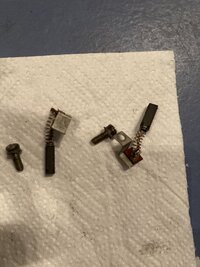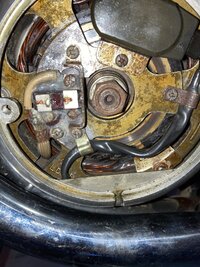tommytwohands
XS650 Enthusiast
Well I’m guessing the oil seal behind this assembly was bust. The oil is dry so it must have been fixed by the PO who didn’t bother to clean the pieces.
WB-40 or degreaser be acceptable to use to clean? I may have a short to ground anyway on the rotor and stator, but a second multimeter will soon confirm this. So I may be in the classified section soon enough looking for some parts.
Is a shorted rotor as good as dead or can it be rewound and saved?
WB-40 or degreaser be acceptable to use to clean? I may have a short to ground anyway on the rotor and stator, but a second multimeter will soon confirm this. So I may be in the classified section soon enough looking for some parts.
Is a shorted rotor as good as dead or can it be rewound and saved?


